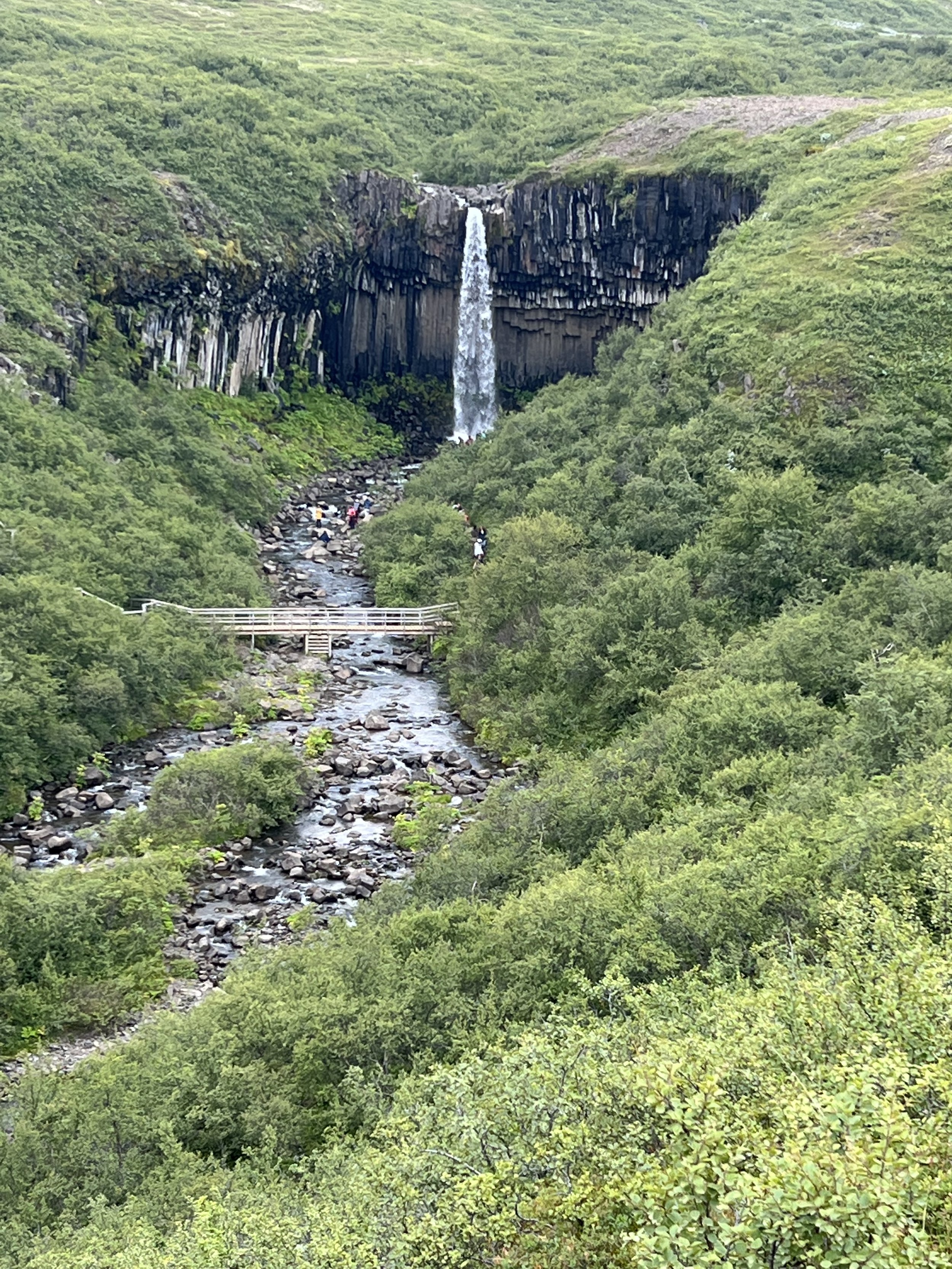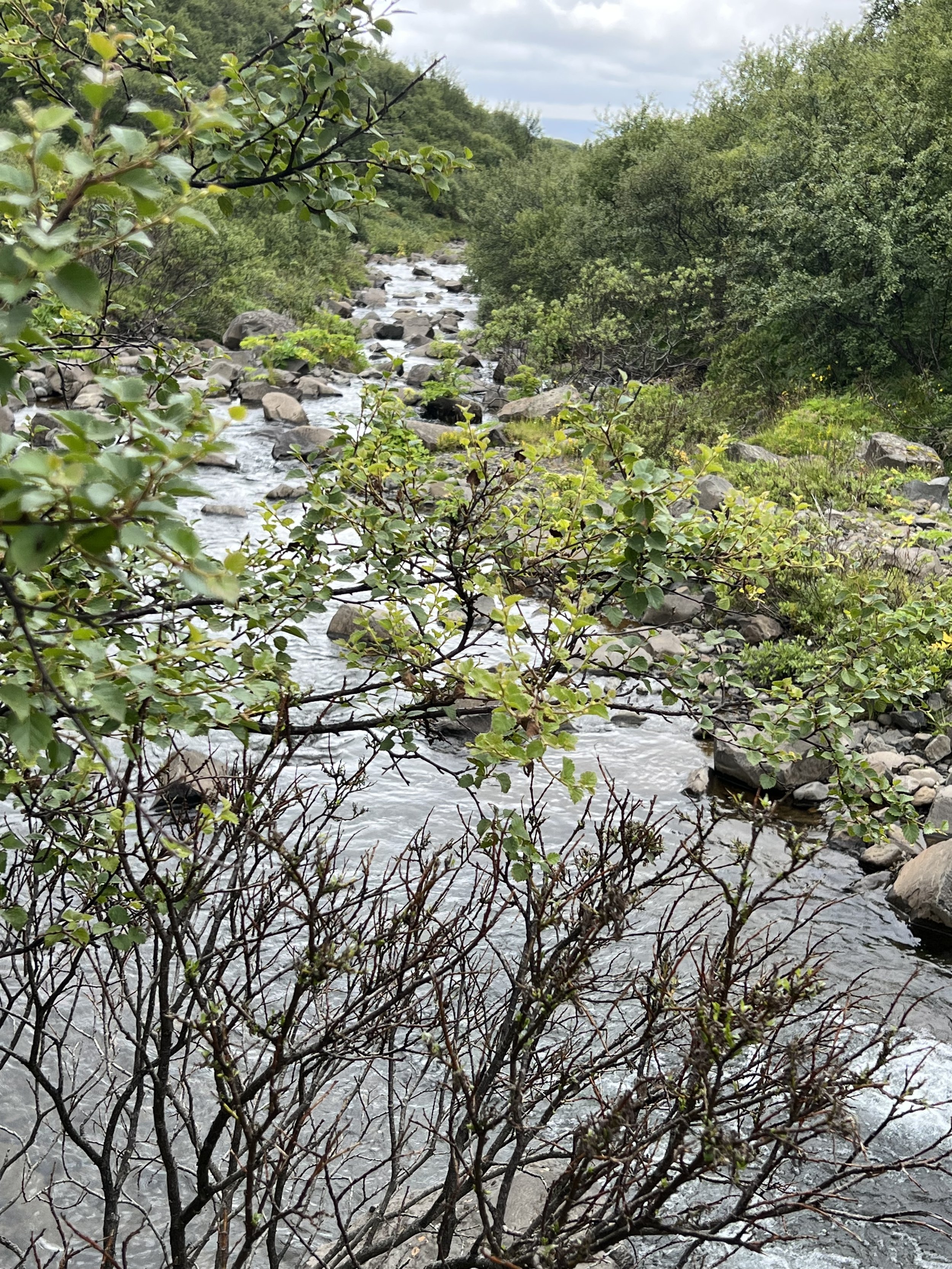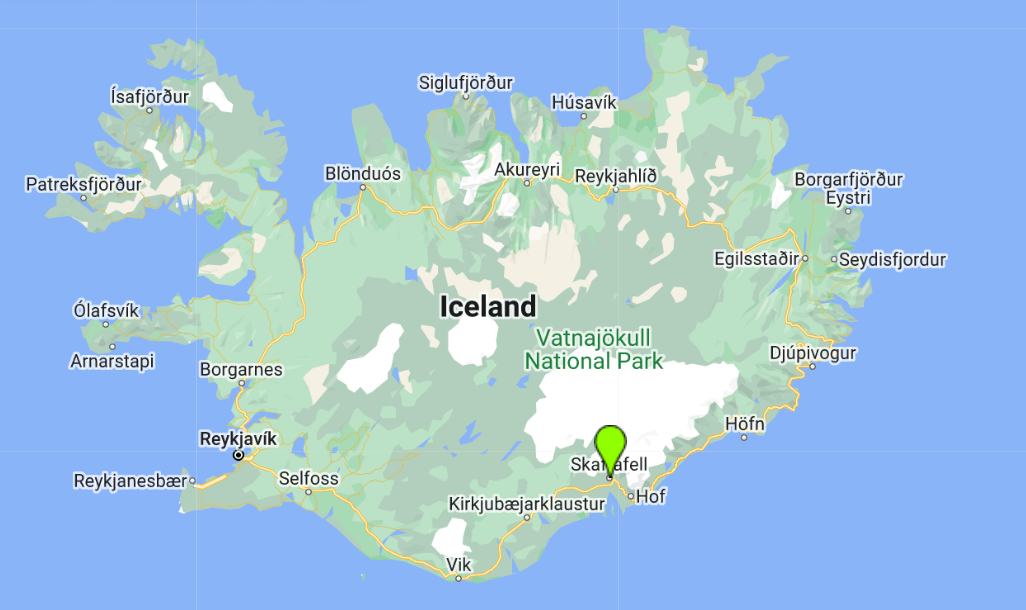Svartifoss - the ‘Black Falls’
The beautiful Svartifoss
Svartifoss is one of those places that I’ve been meaning to visit for ages and yet I’d been here for over a year before I finally got to see it. We have passed the road to the car park many times now on the south coast road, just before you reach the Vatnajökull glacier on the way to Glacier Lagoon and Diamond Beach, and although we had parked in the car park and set off on the way up to the falls once before, shortly after I arrived in Iceland, we had decided against the walk as we weren’t sure how long it was and it was already late and we had a long drive ahead of us. So somehow it was one of those locations that we kept promising ourselves that we would visit, but it never quite happened. So when we headed off to the East Coast this summer we decided to make a stop on our way to our first AirBnB in Höfn and finally see the famous Svartifoss.
Seen from a distance with the heavily wooded slopes in the foreground
Svartifoss means ‘Black Falls’ and it is so called, not because of the colour of the water but due to the black hexagonal basalt columns that surround it and form a backdrop to the vertical drop of the waterfall itself. These black basalt columns give the waterfall its name and they are so stunning that although the Svartifoss waterfall is not particularly large or powerful, it has become one of the most photographed waterfalls in Iceland. The darkness of the stone and the beauty of the broken columns mean that Svartifoss is really quite unique. These columns have inspired many artists; in Reykjavík the columns of the huge Hallgrímskirkja, and the National Theatre building are said to have been inspired by this place, as well as Richard Sierra’s ‘Milestones’ on Viðey Island.
Svartifoss is located in the Skaftafell Nature Reserve, part of the Vatnajökull National Park. This whole area is very beautiful, with its birch forest, lava fields, rivers and streams, mountainsides and waterfalls - and of course the glacier itself that ends in many long finger-like stretches of ice that stretch out towards the sea. Because this area is wooded and packed with plants and shrubs, there are many birds that can be seen and heard here so it’s a gorgeous place to walk, and to take a camera.
For many visitors, Svartifoss is the highlight of this lovely area and to make it even more appealing the hike from the Skaftafell Visitors’ Centre to the waterfall is only just over thirty minutes, and relatively easy, although uphill all the way.
The hike to Svartifoss is about 1.5 kilometres each way. On the way up to Svartifoss you pass three other waterfalls; Þjofafoss (Thieves’ Fall), Hundafoss (Dogs’ Fall) and Magnúsarfoss (the Falls of Magnus). These too are worth stopping to see as you make your way up the mountainside to Svartifoss itself.
Two of the smaller falls on the way up to Svartifoss; Magnúsarfoss and Hundafoss
The river Stórilækur that feeds Svartifoss comes from the Vatnajökull glacier, and eventually ends in the river Skaftafellsa named after Skaftafell itself. Although Svartifoss only has a single drop of approximately 20 metres (80 feet), it is a very special waterfall in a beautiful surrounding. There are few waterfalls that drop off a sheer cliff with basalt rocks that look for all the world like an church organ. We could have spent hours just standing watching the frothy white water tumbling over the coal black basalt, as it then settles into a calm pool below the broken chunks of basalt. The horseshoe cliff of basalt columns form such an incredible sight, particularly the way that so many of them finish partway down the waterfall and so just seem to hang there, making the view even more stunning.
The columns are shaped like this because they were formed in a lava flow that cooled very slowly, which causing these hexagonal shapes. You can find similar columns on the black beach of Reynisfjara, and in Stuðlagil Canyon amongst other places. The columnar basalt formation all around these falls is perhaps the best example of columnar jointing in all of Iceland, and is one of the most famous examples of the phenomena on earth - which is what makes Svartifoss such a sought after location for landscape photographers, frequently depicted in calendars featuring waterfalls and making this otherwise unassuming cascade of water one of the more recognizable waterfalls on earth as a result.












